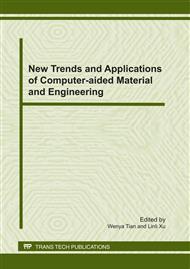[1]
W. Smith, in: Product Differentiation and Market Segmentation. Alternative Marketing Strategies. volume 7 of Journal of Marketing(1956).
Google Scholar
[2]
M. Gorgoglione, C. Palmisano and A. Tuzhilin, in: Personalization in context: Does context matter when building personalized customer models, Proceedings of the Sixth International Conference on Data Mining, Boston(2006), in press.
DOI: 10.1109/icdm.2006.125
Google Scholar
[3]
J.Y. Choi, H.S. Song and S.H. Kim, in: MCORE: a context-sensitive recommendation system for the mobile Web. volume 24 of Expert Systems, Chapter, 1, (2007).
DOI: 10.1111/j.1468-0394.2007.00419.x
Google Scholar
[4]
L. Yingzi, W. Hao, in: A Summarization of Customer Segmentation Methods , volume 20 of Journal of Industrial Engineering and Engineering Management, Chapter, 1, (2006).
Google Scholar
[5]
J.E. Jackson, in: A user's guide to principal components. John Wiley & Sons Inc, New York(1991) , in press.
Google Scholar
[6]
U. Panniello, A. Tuzhilin. in: Experimental Comparison of Pre- vs. Post-filtering Approaches in Context-Aware Recommender Systems, ACM Conference On Recommender Systems archive Proceedings of the third ACM conference on Recommender systems, New York (2009).
DOI: 10.1145/1639714.1639764
Google Scholar
[7]
E.H. Han, G. Karypis, V. Kumar, and B. Mobasher. in: Clustering in a high-dimensional space using hypergraph models, Minneapolis : Department of Computer Science, University of Minnesota(1997) , in press.
Google Scholar
[8]
C. Jianbin, W. Shujing and S. Hantao, in: New Clustering Method in High-Dimensional Space Based on Hypergraph-Mode, volume 15 of Journal of Beijing Institute of Technology, Chapter, 2, (2006).
Google Scholar
[9]
B.N. Miller, I. Albert and S.K. Lam. in: MovieLens Unplugged: Experiences with a Recommender System on Four Mobile Devices, volume 17 of People and Computers, Chapter, 4, (2004).
DOI: 10.1007/978-1-4471-3754-2_16
Google Scholar
[10]
G. Karypis, R. Aggarwal and V. Kumar. in: Multilevel hypergraph partitioning application in VLSI design . Proceedings of the ACM/IEEE Design Automation Conference, ACM Press, CA(1997), in press.
DOI: 10.1109/dac.1997.597203
Google Scholar


